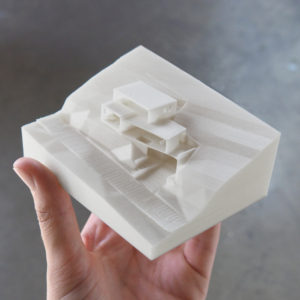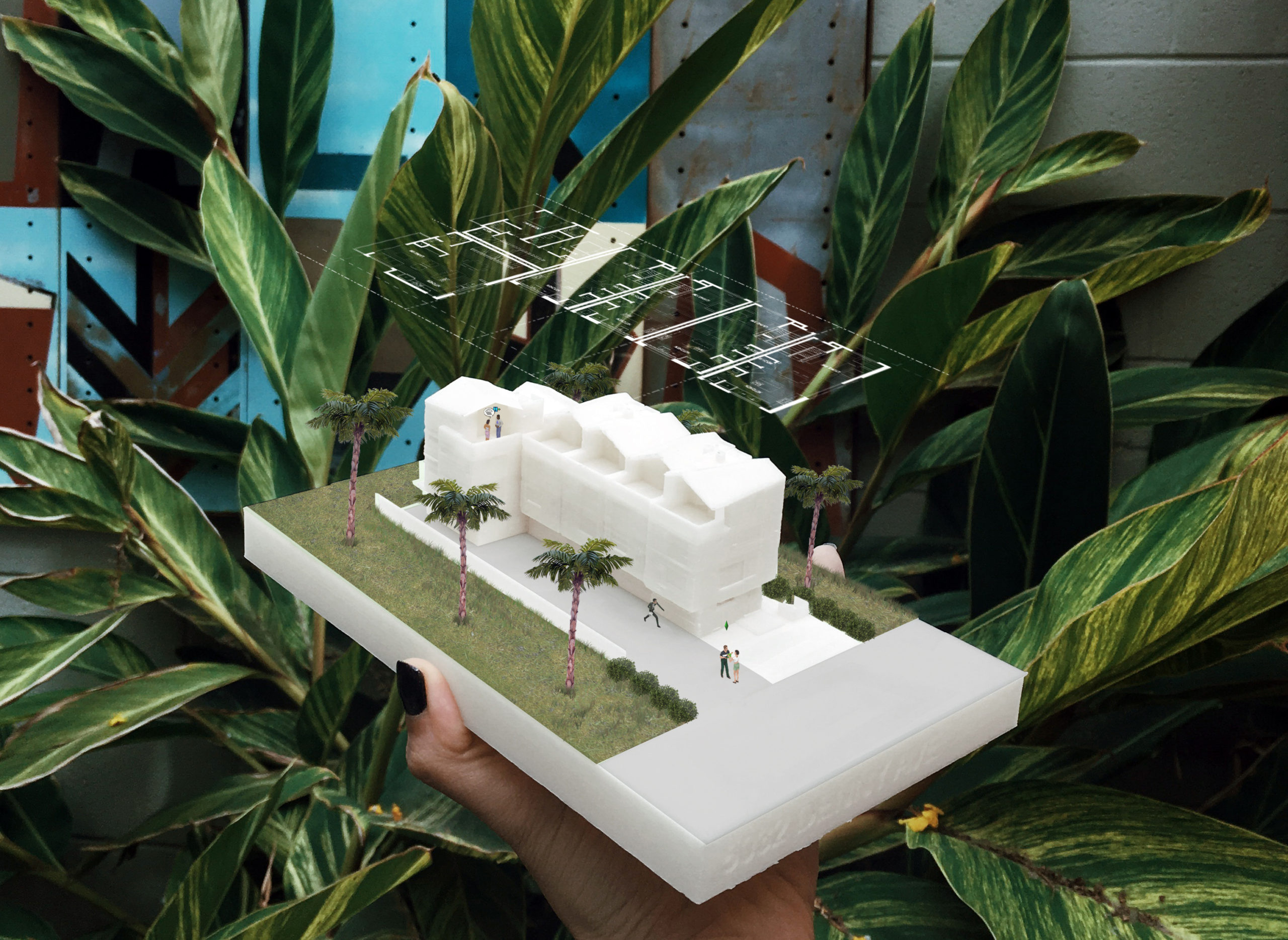3D PRINTING FOR ARCHITECTS
Creating a 3-dimensional model of an architectural project is huge benefit to both the client and the architect. Gone are the days of cutting foam core into the wee hours of the night. These days, when we want to create a project model, we have access to the wonderful world of 3D printing. With this new technology readily accessible, we believe 3D printers are a great addition to any architecture firm. Some architects, including our firm, have taken the leap and are rapidly producing detailed models that really “wow” clients.
When chatting with people at other architecture firms, we all agree 3D printing is cool. Like, really cool. Not only does 3D printing generate enthusiasm from clients, it engages our child-like creativity and challenges us in new, exciting ways. Because there are many 3D printer choices, and they can be expensive, it can be overwhelming to invest in this new technology. Let us reassure you: we went from not knowing anything about 3D printers to being self-proclaimed 3D printer technicians. Now we’re here to share our knowledge and experience to help other firms starting their 3D printer journey.
**Disclaimer: While we have done extensive amounts of research, we are in no way experts, and advise you to do more research beyond this article. However, if you have specific questions, please feel free to reach out and chat! **
WHAT’S THE BEST 3D PRINTER FOR YOUR FIRM?
Now let’s get down to business. Each printer has its pros and cons, so naturally we focused on what was best for our needs. It’s important to consider the types of projects your firm works on and the level of detail that would be beneficial. For us, we decided that while quality is important, we only need a moderate amount of detail to convey our designs (e.g., if your designs often involve intricate crown molding, you’d probably want a higher level of detail).
As a firm that had never used a 3D printer before, we needed something that was intuitive, produced decent prints, and didn’t break the budget.
We narrowed it down to the two most common types of printers: FDM and SLA. Two very different processes, but depending on your end goals, either type would be sufficient. This information can get dense, so we’ve simplified the characteristics of each to help you decide what would work best for your firm.
FDM EXPLAINED
Fused Deposition Modeling (FDM) works by melting a filament, such as PLA, which is a biodegradable thermoplastic. In layperson’s terms, this process is similar to a glue gun melting plastic and building up layers to create the 3D model. There are filaments with varying strengths and colors that will work for just about every occasion. Lastly, filaments for FDM printers are affordable and easy-to-find, which make them great for beginners.
PROS
- Most cost-effective way of producing models
- Readily accessible printers and accessories
- Wide range of filaments available, varying in material and color
- Easier learning curve
CONS
- Lower print resolution, so not suitable for printing intricate details
- Requires sanding and post-processing to achieve smooth finish
SLA EXPLAINED
Stereolithography (SLA) is an additive process that belongs to the Vat Photopolymerization family. In layperson’s terms, layers of liquid resin are hardened by a fancy ultraviolet laser beam to build your 3D model. This was actually the very first 3D printing method that was patented back in 1986. While SLA printers are more readily available these days, they are much more expensive than FDM printers and have a lengthy post-processing time. Still beginner-friendly but require a little extra work.
PROS
- SLA can produce intricate prints with accuracy
- SLA prints have a very smooth finish, making them ideal for visual prototypes
- There are specialty materials, such as clear and flexible rubber-like resins
CONS
- SLA prints are typically brittle and not suitable for working prototypes
- Support structures are always required and lead to a lengthy post-processing time
- More expensive than FDM printers

THIS SOUNDS EXPENSIVE…
Purchasing a 3D printer can be expensive, but there are affordable options out there. Just like a tattoo, you get what you pay for. If you’re going all-in and want the highest quality prints available, we recommend SLA. An SLA 3D printer will run you about $3,500.
If you’re like us and want fun, easy, 3D prints to show simple forms to clients, I recommend purchasing an FDM printer (with PLA filament). Specifically, we ended up buying the Prusa i3 MK3. You can buy it assembled for around $1000, or you can buy the DIY kit for $750. We decided to buy the kit, so we could build it and learn the ins and outs of the printer. Things definitely go wrong and need to be adjusted with any 3D printer, so knowing how to fix it can save you a lot of time and money. (Shout out to our neighbor architecture friend, Eric, who saved the day more than once when we were building it from scratch!)
Prusa has a great reputation in the 3D printing community with an active fan base constantly sharing YouTube videos and other helpful information, such as here and here. This printer has an intuitive design and is simple to learn how to operate. We built our printer over two days and started immediately experimenting. If you’d like more information about all the fun features of the MK3, check out their site here.
IN CONCLUSION
Computers today can create a distance between the maker and the object, which is why we value a physical model that creates a 3-dimensional design process for both the client and architect. Have we mentioned clients love the 3D models? We’ve learned they’re a great relationship builder and make communication easier.
Presenting a 3D model is a great way to say, “Hey we value your project, check out what we made!”
Whether you choose FDM or SLA, you can’t go wrong. Now go out there, do your own research, and start exploring 3D printer options.
P.S. Don’t hesitate to ask us questions if you’d like to know more about our own 3D printing journey!


I use additive manufacturing to make mechanical parts. The processes differs sometimes but key basic question arises…. If you can submit a job on ine and get parts back within days, why own the printer yourself? The decision is akin to having your own darkroom and making your own prints as opposed to getting your photos printed by a professional service. Ok, sorry, that analogy is not really relevant anymore is it! Showing my age here! (;-)
Nonetheless its worth considering whether its better to purchase an additive printing service or own your won equipment. If using a service you have the option of switching technologies to meet the need.
truly amazing – cannot imagine how much more power i might have had re. my own architectrual and interior design experience. of course, due to low IQ i suppose, i avoided any CAD training in the early to mid eighties like the plagure just when it was the moment in history to jump on-board. big personal error although i do still think learning earliest versions of “CAD” et al was rather complex and i never passed Calculus in college even taking it twice ! ’nuff said !